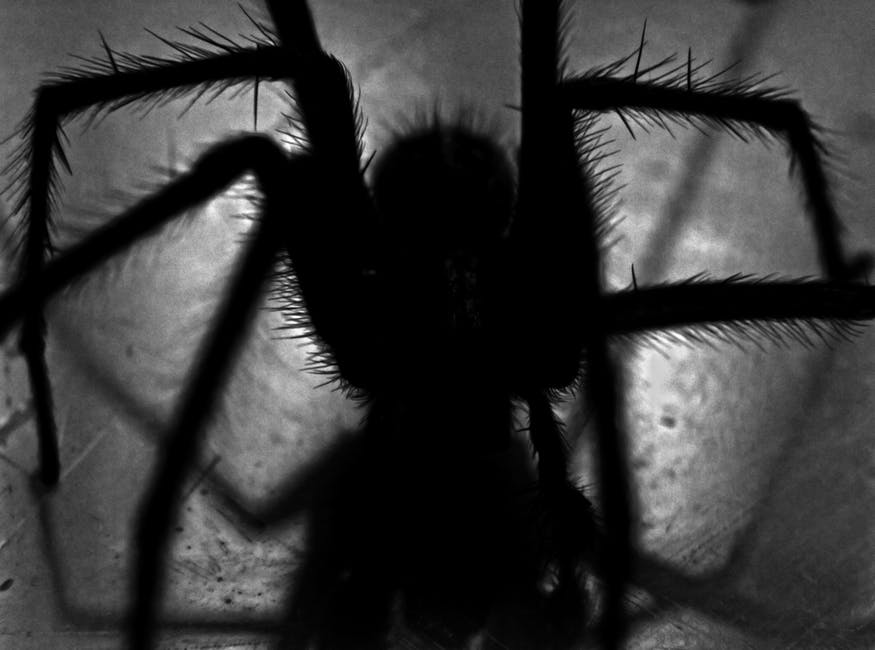Are you afraid of spiders?
Arachnophobia, the fear of spiders, is one of the most common fears in the US. Finding a spider in your home may not be the most pleasant experience. Many household owners rush to kill or get rid of spiders in alternative ways.
Spider bites are often harmless. Out of 40,000 species of spiders, only 12 out of 500 are venomous. You can go your whole life without ever encountering a poisonous spider.
However, it can be difficult to identify poisonous spiders. In this article, we show you the different types of venomous household spiders. Read on to discover more!
The Brown Recluse Spider
The brown recluse spider is common in the Southeast and Midwest of the United States. This secretive spider prefers to live in dark and dry environments. Out of all the poisonous spiders on this list, the brown recluse spider is the most notorious.
You can often find this spider in woodpiles, closets, and basements. You may also find this spider hiding in rocks, fallen trees, and garages. The brown recluse spider forms an irregular, small web of disorganized silk threads.
Some may refer to the brown recluse spider as the Violin Back or the Fiddleback. This is due to the marking on its head that resembles the string instrument. The neck of the violin markings points towards the back of the spider.
However, not all brown recluse spiders have this marking. If you’re trying to identify a brown recluse spider, don’t rely on only the violin marking. The underside of the brown recluse spider looks like an oblong with uniform color.
This arachnid is often brown in color. However, it can also be right brown, tan, or whitish in color. In contrast to most spiders, brown recluse spiders have 6 eyes instead of 8.
These eyes are in pairs of two. There are two eyes in the median part and two lateral eyes on either side.
Brown Recluse Bite
This spider will only bite if it feels threatened or trapped. You could get bitten if you reach a hand or foot into your clothes or item where a brown recluse spider could be. Bites from a brown recluse spider could take at least three hours to develop.
When bitten by a brown recluse spider, keep an eye on the affected area. The surrounding area of the bite will feel excruciating pain. It can also cause severe allergic reactions.
Do you have a brown recluse spider infestation? Check out https://www.altuspest.com/pest-control/spider/brown-recluse-spider/.
The Black Widow Spider
The black widow spider is one of the easiest species to identify. You can find over five species of the black widow spider in North America. The female black widow spider is easy to identify thanks to its big and round belly.
Female black widow spiders are nocturnal creatures who like hiding in dark places. These spiders are about the size of a quarter, ranging from 1.3 cm to 3.8 cm long. Some spiders of the species have a red hourglass shape on its belly.
Sometimes, the hourglass may be orange. It can also come as a dot, a series of dots, or a stripe. These features may depend on the spider’s location and age.
The black widow spider’s body has a sleek and shiny black color. Male spiders are often smaller than females and have smaller amounts of venom. Because of this, male black widow spiders are harmless and less feared than females.
Black widow spiders weave webs with irregular shapes. Many refer to this as the drunken web. Black widow spider webs are often found close to the ground and have the strongest silks.
Black widow spiders prefer to keep their webs in the dark and out of sight. They also like to make their homes in warm places with easy access to food. You can find a black widow spider anywhere in North America.
Black Widow Spider Bite
The bite of a black widow spider can be fatal, especially to the elderly and young children. Even a small amount of venom can attack the nervous system and cause severe illness. Symptoms of a bite include vomiting, nausea, abdominal pain, hypertension, and pyrexia.
A bite can go unnoticed or experience intense pain. Getting a bite from a black widow spider requires immediate attention. People with a heart condition or problem may need to get hospitalized.
The Hobo Spider
Hobo spiders find their home across the Pacific Northwest. Their namesake suggests that this arachnid prefers to be alone and isolated. Hobo spiders are large creatures and brown in color.
It can be difficult to identify this spider if you don’t know what to look for. Its distinctive feature is yellow markings on its abdomen. Most spiders have dark band patterns on their legs.
However, the hobo spider doesn’t have this feature. Hobo spiders build funnel webs in crevices, cracks, and holes. These funnel-shaped webs allow them to capture prey.
In human homes, you can find a hobo spider in retaining walls and building foundations. You may also find them in stacks of woods or bricks. Indoors, you can find a hobo spider in window sills, closets, and behind furniture.
You may also find this arachnid in storage boxes in your attic. While hobo spiders don’t climb, they can run very fast.
Hobo Spider Bite
Hobo spiders don’t attack unless attacked first or provoked. They may also bite if you invade their territory. Hobo spider bites may be harmless and even unnoticed at first.
However, if left untreated, it can grow into a moderate to a severe wound. This spider bite is a slow-healing wound that turns into a blister. Symptoms can include fatigue, nausea, vision impairment, and temporary memory loss.
Now You Can Identify Poisonous Spiders Too
Now you know how to identify the most common types of poisonous spiders. Knowing these poisonous household spiders will allow you to prevent unwanted encounters. From hobo spiders to black widows, use this guide to identifying poisonous spiders.
Don’t stop here because there are even more spiders to discover! Are you looking for more tips on how to identify poisonous spiders and other animals? If you are, don’t hesitate to check out our other guides today.






